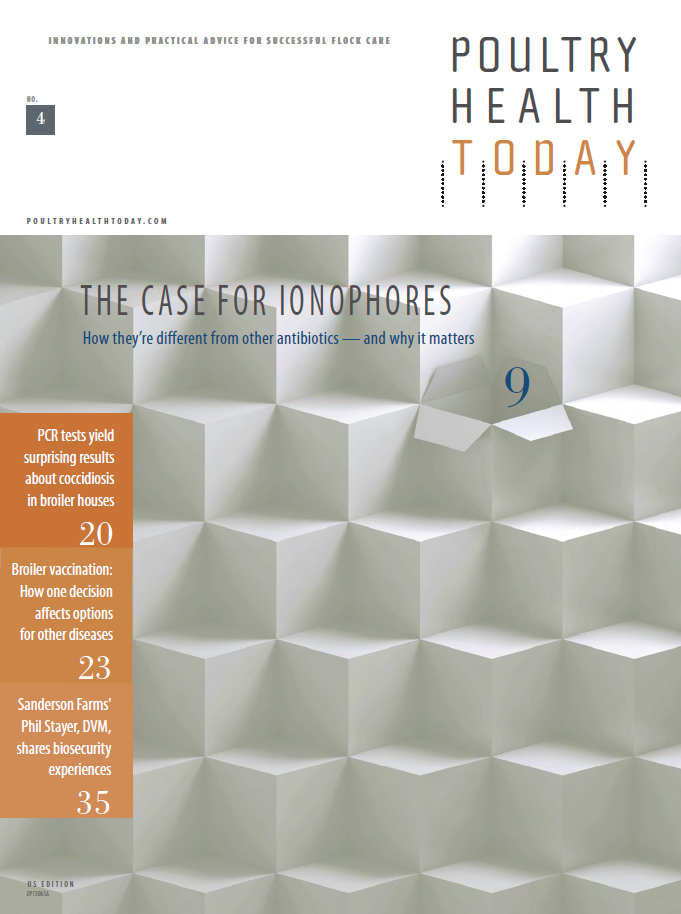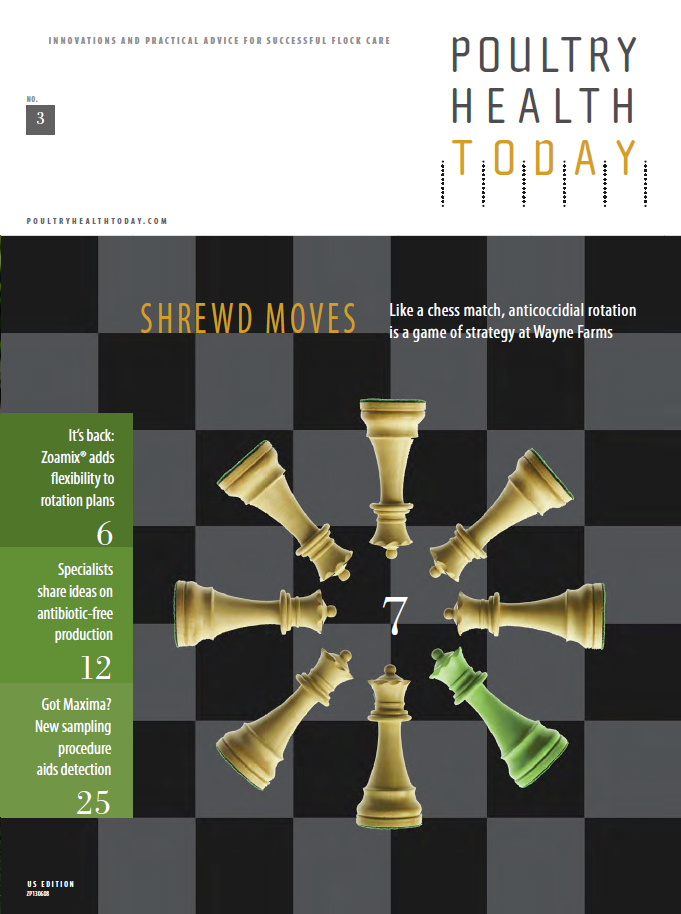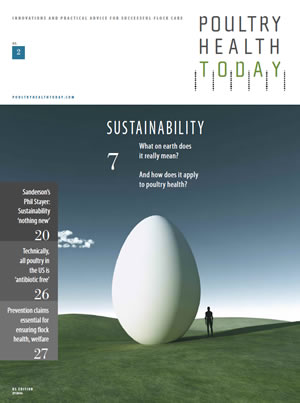

Cage-free hen housing: How far will the pendulum swing?

By John Brown, DVM
Senior Technical Services Veterinarian, Zoetis
Consumer demand is pushing the pendulum toward cage-free egg production, but just how far that pendulum will swing remains to be seen.
In a law that took effect in January 2015, California mandated increased space for egg-layers. Several other states have since passed laws regulating hen housing. Yet, as of March 2015, organic and cage-free shell egg production accounted for only 6.4% (19.2 million hens) of the table egg-layer flock.
However, the recent announcement from McDonald’s USA that it will eventually transition to buying all its eggs from cage-free hens really grabbed the industry’s attention, especially considering the fast-food giant buys about 2 billion US eggs annually. Other large food vendors such as Starbucks and Kelloggs have similar plans in the works.
Benefits to hens
For hens, the trend toward cage-free housing certainly has some benefits. If you’ve ever been in a cage-free poultry operation, you can observe birds exhibiting many of the same natural activities you’d expect to see wild birds demonstrate — short flights, dust bathing, wing flapping, running around and grooming, to name a few. The birds appear happy.
Nevertheless, there are risks that come with this more open environment — the same risks that many years ago prompted producers to move hens from the floor into cages. Moving hens out of cages could also have a negative impact on food safety, the environment and on producer and consumer costs.
Increased disease
One of the major risks for cage-free hens is bacterial disease. Hens that are on the floor or allowed outdoor access come in contact with manure and can be at greater risk for exposure to pathogens, particularly Escherichia coli and Salmonella.
Parasitic disease is another risk for cage-free hens, with coccidiosis topping the list. as all poultry producers are well aware, coccidia, the cause of coccidiosis, are present in virtually all poultry operations and they’re prolific — 10 coccidial oocysts (eggs) can produce over 500,000 progeny in just days.1
Cage-free hens on the floor or ground are far more likely to ingest oocysts compared to caged hens, resulting in intestinal damage that can lead to poor nutrient absorption, poor shell quality and even mortality.
Food safety
Egg quality hasn’t been found to differ much between eggs from cage-free and caged systems, but eggs laid by hens on the floor instead of in nesting boxes are at increased risk for bacterial contamination, which could adversely affect food safety.
This was demonstrated by USDA researchers who compared the microbiological impact of conventional cage, enriched-colony cage and cage-free systems. They concluded that “floor eggs have the greatest opportunity for exposure to high levels of microorganisms and human pathogens so flocks should be managed to prevent the occurrence of floor eggs.”2
Welfare risks
There are welfare concerns with cage-free systems, where feather pecking and cannibalism are common. A study by the Coalition for Sustainable Egg Supply (CSES), which represents a group of animal-health scientists, egg suppliers and major food companies, found that mortality in a cage-free system was double that of other housing systems, in part due to excessive pecking and cannibalizing, despite beak trimming.
Bird strains prone to cannibalism in cages are prone to cannibalism in cage-free operations. geneticists at breeder companies are trying to select for less aggressive strains as well as strains more prone to laying eggs in nests instead of on the floor. Still, all birds by nature tend to be aggressive and cannibalistic to some degree. In a cage-free operation, where all birds in the house can interact with each other, a more exaggerated pecking order may develop because there are more opportunities for “boss” birds to dominate weaker, more timid birds.
Giving birds access to the outdoors might be one solution to crowding, but that makes them vulnerable to predators and to diseases such as avian influenza, which is transmitted primarily by waterfowl.
In addition, cage-free hens are also more likely to sustain broken bones from flying and landing mishaps. the CSES study found that between 9% and 21% of flights in an aviary ended in failed landings, which may have contributed to a higher level of keel-bone breakage.
The same study — criticized by animal-welfare advocates because it was in part industry backed — further found indoor air quality was poor in a cage-free system, where hens stir up dust while walking around in manure, resulting in elevated ammonia levels.
Impact on producers, environment
For producers, I know of no advantages to cage-free egg-laying systems. The challenge in transitioning from a caged to cage-free operation is making the switch without compromising flock health and welfare.
Producers will have to become more aware of potential disease due to exposure to droppings. they’ll have to be diligent about vaccination, particularly against E. coli and Salmonella. This is especially true for operations with brown-egg layers, which are known to have more issues with bacterial infections.
Increased monitoring for coccidia will be vitally important in cage-free systems, as well as the routine use of coccidiosis vaccines, synthetic anticoccidials and ionophores.
Biosecurity is critical in any poultry operation, especially considering all the concerns about avian influenza. The aviary-style housing commonly being built these days has no more stringent biosecurity requirements than a traditional cage system, but if hens are given access to the outdoors — a requirement for organic-egg labeling — biosecurity will be more problematic since it is more difficult to protect hens from predators and infectious disease.
Cage-free hens eat more because they move around more, so producers will need to feed more grain, and more land is required to grow that grain. More space — and land — is needed to house hens. the result is a bigger “carbon footprint.”
It should be no surprise that producers transitioning to a cage-free operation can expect higher costs; the CSES study found cage-free systems cost 36% more to operate, and the higher cost of cage-free eggs must be passed on to consumers.
Consumer choices
Despite these difficulties, I think the pendulum is swinging toward more cage-free egg production. How far and fast this segment of the market expands will depend on economics and, in part, on the industry’s ability to meet the demand for cage-free eggs.
Should production costs and the cost of eggs increase significantly and the economy doesn’t improve, more consumers may opt for the cheapest egg available rather than the more expensive cage-free egg, and that could slow down cage-free market growth. Consumers with more disposable income who favor cage-free eggs may continue to buy cage-free eggs, never mind the cost.
We don’t know yet if the consumer demand will be affected by the environmental impact of the additional grains needed for the hens, the additional land needed for housing and grain production, and the additional carbon footprint. We’ll have to stay tuned to find out.
What I think the industry has learned from the experience so far is that we have to respond to the needs of the consumer. all deserve the option to buy the egg that fits their beliefs and their budget.
1Chapman HD, et al. Vaccination of chickens against coccidiosis ameliorates drug resistance in commercial poultry production. Int J Parasitol: Drugs and Drug Resistance 4. 2014:214-217.
2Jones DR, et al. Microbiological impact of three commercial laying hen housing systems. Poult Sci.2015;94:544–551.
More Issues















